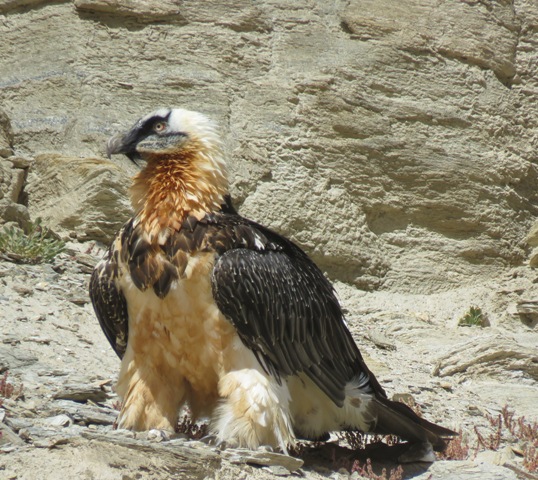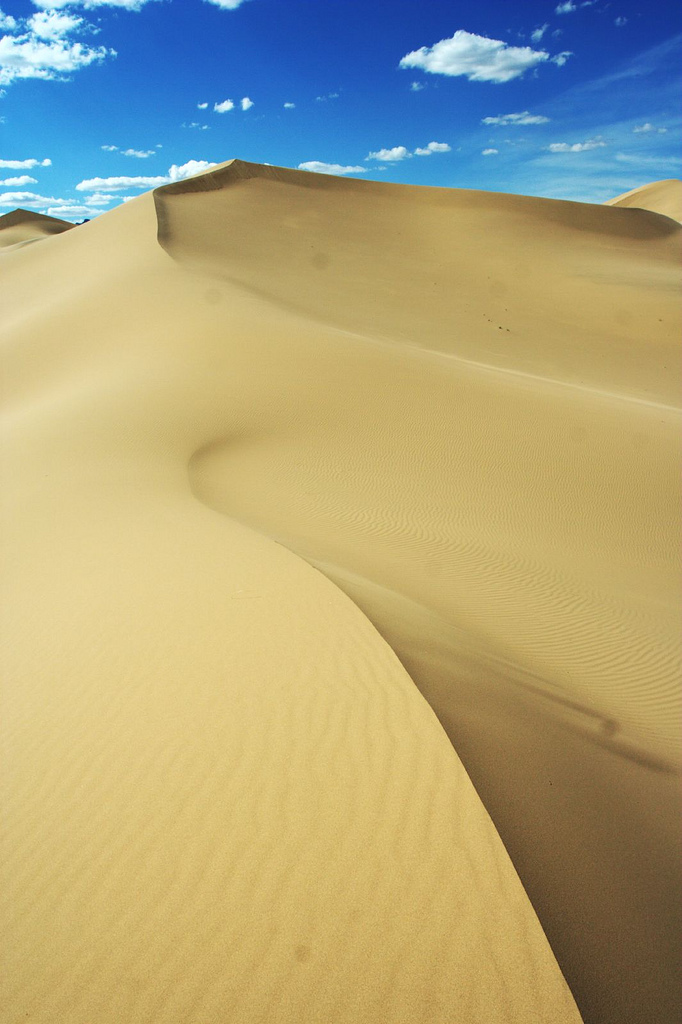|
Yolyn Am
Remnants of the Yolyn Am ice field, September 2006 Yolyn Am ( mn, Ёлын Ам, ''Lammergeier Valley'') is a deep and narrow gorge in the Gurvan Saikhan Mountains of southern Mongolia. The valley is named after the Lammergeier, which is called ''Yol'' in Mongolian. The Lammergeier is an Old World vulture, hence the name is often translated to ''Valley of the Vultures'' or ''Valley of the Eagles''. The valley is located within Gobi Gurvansaikhan National Park. Yolyn Am is found in the Zuun Saikhanii Nuruu (the ''Eastern Beauty'') subrange of the Gurvan Saikhan Mountains. The area, as part of the Gobi Desert, sees little precipitation. However, Yolyn Am is notable for a deep ice field An ice field (also spelled icefield) is a mass of interconnected valley glaciers (also called mountain glaciers or alpine glaciers) on a mountain mass with protruding rock ridges or summits. They are often found in the colder climates and highe .... The ice field reaches several meters thic ... [...More Info...] [...Related Items...] OR: [Wikipedia] [Google] [Baidu] |
Lammergeier
The bearded vulture (''Gypaetus barbatus''), also known as the lammergeier and ossifrage, is a very large bird of prey and the only member of the genus ''Gypaetus''. Traditionally considered an Old World vulture, it actually forms a separate minor lineage of Accipitridae together with the Egyptian vulture (''Neophron percnopterus''), its closest living relative. It is not much more closely related to the Old World vultures proper than to, for example, hawks, and differs from the former by its feathered neck. Although dissimilar, the Egyptian and bearded vulture each have a lozenge-shaped tail—unusual among birds of prey. The bearded vulture population is thought to be in decline; in 2004, it was classified on the IUCN Red List as least concern but has been listed as near threatened since 2014. It lives and breeds on crags in high mountains in southern Europe, East Africa, the Indian subcontinent, Tibet, and the Caucasus. Females lay one or two eggs in mid-winter that hatch at ... [...More Info...] [...Related Items...] OR: [Wikipedia] [Google] [Baidu] |
Canyon
A canyon (from ; archaic British English spelling: ''cañon''), or gorge, is a deep cleft between escarpments or cliffs resulting from weathering and the erosion, erosive activity of a river over geologic time scales. Rivers have a natural tendency to cut through underlying surfaces, eventually wearing away rock layers as sediments are removed downstream. A river bed will gradually reach a baseline elevation, which is the same elevation as the body of water into which the river drains. The processes of weathering and erosion will form canyons when the river's River source, headwaters and estuary are at significantly different elevations, particularly through regions where softer rock layers are intermingled with harder layers more resistant to weathering. A canyon may also refer to a rift between two mountain peaks, such as those in ranges including the Rocky Mountains, the Alps, the Himalayas or the Andes. Usually, a river or stream carves out such splits between mountains. Examp ... [...More Info...] [...Related Items...] OR: [Wikipedia] [Google] [Baidu] |
Gurvan Saikhan Mountains
The Gurvan Saikhan ( mn, Гурван Сайхан, ''lit.'' ''"three beauties"''), is a mountain range in the Ömnögovi Province of southern Mongolia. It is named for three subranges: Baruun Saikhany Nuruu (the ''Western Beauty''), Dund Saikhany Nuruu (the ''Middle Beauty'') and Zuun Saikhany Nuruu (the ''Eastern Beauty''). The highest peak is found in Dund Saikhany Nuruu, and is above sea level. A notable gorge, Yolyn Am, is found in Zuun Saikhany Nuruu. Though the range is surrounded by the Gobi desert, Yolyn Am contains a semi-permanent ice field. The range forms the eastern part of the Gobi Gurvansaikhan National Park Gobi Gurvansaikhan National Park (, ''Gobi three beauties nature complex'') is a national park in southern Mongolia. The park was established in 1993, and expanded to its current size in 2000. The park, at nearly 27,000 square kilometers, is the .... External linksTourist map of Gobi Gurvansaikhan National Park Altai Mountains Mountain ranges of Mongol ... [...More Info...] [...Related Items...] OR: [Wikipedia] [Google] [Baidu] |
Mongolia
Mongolia; Mongolian script: , , ; lit. "Mongol Nation" or "State of Mongolia" () is a landlocked country in East Asia, bordered by Russia to the north and China to the south. It covers an area of , with a population of just 3.3 million, making it the world's most sparsely populated sovereign nation. Mongolia is the world's largest landlocked country that does not border a closed sea, and much of its area is covered by grassy steppe, with mountains to the north and west and the Gobi Desert to the south. Ulaanbaatar, the capital and largest city, is home to roughly half of the country's population. The territory of modern-day Mongolia has been ruled by various nomadic empires, including the Xiongnu, the Xianbei, the Rouran, the First Turkic Khaganate, and others. In 1206, Genghis Khan founded the Mongol Empire, which became the largest contiguous land empire in history. His grandson Kublai Khan conquered China proper and established the Yuan dynasty. After the co ... [...More Info...] [...Related Items...] OR: [Wikipedia] [Google] [Baidu] |
Old World Vulture
Old World vultures are vultures that are found in the Old World, i.e. the continents of Europe, Asia and Africa, and which belong to the family Accipitridae, which also includes eagles, buzzards, kites, and hawks. Old World vultures are not closely related to the superficially similar New World vultures and condors, and do not share that group's good sense of smell. The similarities between the two groups of vultures are due to convergent evolution, rather than a close relationship. They were widespread in both the Old World and North America during the Neogene. Old World vultures are probably a polyphyletic group within Accipitridae, belonging to two separate not closely related groups within the family. Most authorities refer to two major clades: Gypaetinae ('' Gypaetus, Gypohierax'' and ''Neophron'') and Aegypiinae (''Aegypius'', ''Gyps'', '' Sarcogyps'', '' Torgos'', '' Trigonoceps'' and possibly ''Necrosyrtes''). The former seem to be nested with Perninae hawks, while the la ... [...More Info...] [...Related Items...] OR: [Wikipedia] [Google] [Baidu] |
Gobi Gurvansaikhan National Park
Gobi Gurvansaikhan National Park (, ''Gobi three beauties nature complex'') is a national park in southern Mongolia. The park was established in 1993, and expanded to its current size in 2000. The park, at nearly 27,000 square kilometers, is the largest national park in Mongolia, stretching 380 km from east to west and 80 km from north to south. The park is named for the Gurvan Saikhan Mountains, which translates to the ''Three Beauties''. The name is derived from three subranges, the East, Middle and West Beauty. The range forms the eastern half of the park. The park lies on the northern edge of the Gobi desert. The higher elevations contain areas of steppe, and reach elevations of up to 2,600 meters. A number of rare plants and animals are found in the park, including the elusive snow leopard and the Gobi camel. Areas of sand dunes are found, most famously the Khongoryn Els - the Singing Sands. Another major tourist destination is Yolyn Am, which is conn ... [...More Info...] [...Related Items...] OR: [Wikipedia] [Google] [Baidu] |
Gobi Desert
The Gobi Desert (Chinese: 戈壁 (沙漠), Mongolian: Говь (ᠭᠣᠪᠢ)) () is a large desert or brushland region in East Asia, and is the sixth largest desert in the world. Geography The Gobi measures from southwest to northeast and from north to south. The desert is widest in the west, along the line joining the Lake Bosten and the Lop Nor (87°–89° east). In 2007, it occupied an arc of land in area. In its broadest definition, the Gobi includes the long stretch of desert extending from the foot of the Pamirs (77° east) to the Greater Khingan Mountains, 116–118° east, on the border of Manchuria; and from the foothills of the Altay, Sayan, and Yablonoi mountain ranges on the north to the Kunlun, Altyn-Tagh, and Qilian mountain ranges, which form the northern edges of the Tibetan Plateau, on the south. A relatively large area on the east side of the Greater Khingan range, between the upper waters of the Songhua (Sungari) and the upper waters of the Liao-h ... [...More Info...] [...Related Items...] OR: [Wikipedia] [Google] [Baidu] |
Ice Field
An ice field (also spelled icefield) is a mass of interconnected valley glaciers (also called mountain glaciers or alpine glaciers) on a mountain mass with protruding rock ridges or summits. They are often found in the colder climates and higher altitudes of the world where there is sufficient precipitation for them to form. The higher peaks of the underlying mountain rock that protrude through the icefields are known as nunataks. Ice fields are larger than alpine glaciers, but smaller than ice caps and ice sheets. The topography of ice fields is determined by the shape of the surrounding landforms, while ice caps have their own forms overriding underlying shapes. Formation Ice fields are formed by a large accumulation of snow which, through years of compression and freezing, turns into ice. Due to ice's susceptibility to gravity, ice fields usually form over large areas that are basins or atop plateaus, thus allowing a continuum of ice to form over the landscape uninterrupted b ... [...More Info...] [...Related Items...] OR: [Wikipedia] [Google] [Baidu] |





